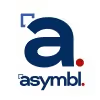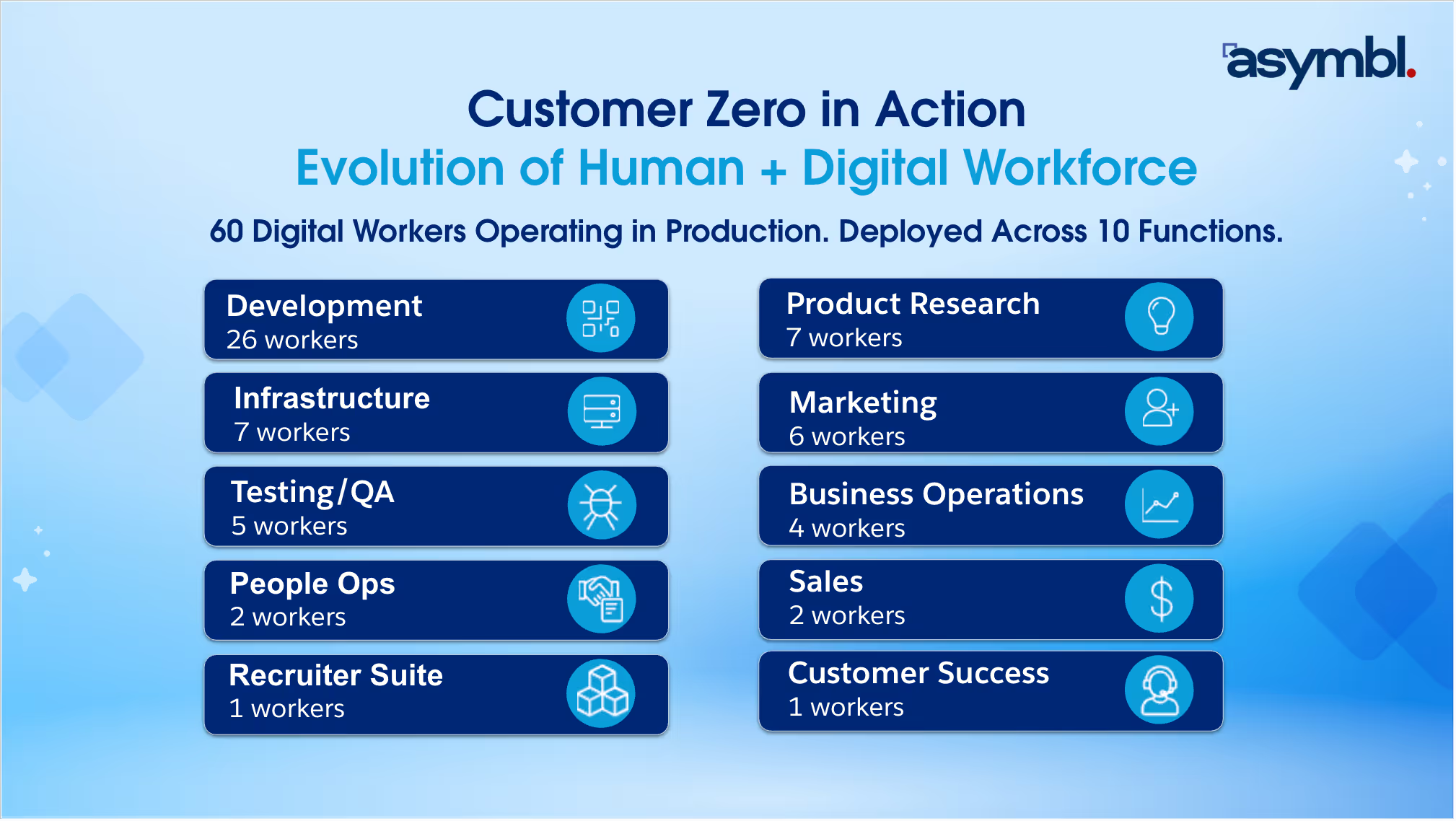The overlooked truth is that the most advanced digital labor strategy collapses without humans at the center of it. Competitive advantage comes from architecting a workforce where humans and digital workers operate as one system.
The Emergence of 2 Worker Classes
The relationship between human workers and businesses is intricate. Historically, the relationship evolved from a division of labor and specialization. But it was the Industrial Revolution of the 18th century that laid the blueprint for how businesses and workers would evolve over time. With the rise of factories then, two classes of workers emerged. Industrial workers, a large, distinct class that generated output; and managers who generated the system that controlled output.
What happened next was a turning point in their relationship. Findings from the Hawthorne Studies over a century later revealed a truth that broke the factory mindset: productivity wasn’t mechanical, it was human. Workers didn’t perform better because machines ran faster. They performed better when they felt seen, supported, and connected.
For the first time, companies realized that productivity was a social system and that managing humans required a different type of intelligence than machines.
Today, history repeats itself. In 2025, we are in the midst of the Fourth Industrial Revolution (4IR), and two nascent classes of workers now exist. With the rollout of custom digital workers, we have a new digital worker class, and the human workers who are evolving to become their managers.
At Asymbl, our Customer Zero approach has led us into this new frontier, where we understand the drivers of productivity and risk avoidance for these two new worker classes. It’s workforce orchestration, and humans are core to the success of this approach. Without human oversight over the new digital labor class, businesses invite a magnification to the natural risks present in a company's operations, processes, and systems.
Humans, The New Managerial Class
People are at the core of workforce orchestration. They help to prevent the inherent vulnerabilities in businesses.
When humans and digital teammates work together, it’s your people who help to prevent strategic decline, legal and compliance failures, security vulnerabilities, operational disruption, financial instability, and reputational damage. It’s your humans who provide critical context, background information, common sense, data updates, and domain expertise to your newly onboarded digital teammates.
Workforce Orchestration is where businesses enter the new strategic frontier, where they define, design, onboard, manage, and scale hybrid teams of humans and digital workers to operate as one. Currently the model optimizes AI tools for humans. The new model orchestrates humans, AI tools, and digital workers together, turning productivity into an outcome of workforce design. At Asymbl we use Slack as our core operating system for collaboration and by having digital workers operate like teammates in Slack the barrier for adoption is low and opportunity for productivity and scalability occurs.
.png)
But your human capital isn’t solely here to deliver conventional understanding. Your humans are your strategic edge, and their digital coworkers have arrived to elevate their potential. The new managerial class, freed from repetitive tasks, can redirect their attention to think outside the box, build connections in new ways, and ultimately guide business towards measurable impact.
Frederic Laloux’s Reinventing Organizations is one of the most influential modern frameworks for rethinking how companies operate, lead, and create value. It provides a research-based blueprint for what Laloux calls the next stage of organizational evolution; beyond hierarchical management structures, beyond command-and-control leadership, and beyond traditional definitions of productivity. Laloux’s insights predicted the shift we’re living now: Work is becoming fluid, not fixed. Knowledge workers expect autonomy and purpose. Technology, especially AI and digital labor, makes rigid hierarchy slower. Digital labor requires management and coaching, and humans require autonomy.
It’s human attention and oversight that gives an organization unified visibility. Humans can evaluate model performance, risks, and compliance. Humans are core to ensuring that their digital workers are safe, compliant and accurate. When businesses ignore human-centric workforce design and equate automation with profit, they open the door to a myriad of threats.
AI, The Digital Labor Class
A pitfall that businesses can fall into when onboarding the new digital worker class is to fantasize about their ability to produce far reaching outcomes independently. The reality is that your businesses’ digital workers, whether they operate with simple clicks or code, cannot function optimally without contextual understanding, intuition, or human feedback to refine their output. Technology requires your business’ bespoke data that only your people can offer.
.png)
When left unmanaged, digital labor can devolve, no longer functioning as a helpful teammate, but as a zombie agent. With decayed performance these zombie digital workers can lead your business into debilitating financial, reputational and legal damage. Zillow, formerly a key player in the niche real estate iBuying industry, lost big in 2021 when its algorithm, ineffectively managed and overreliant on 30-day-old data, cost the company $500 Million in losses.
Other players, like Opendoor and Offerpad also lost big. Unlike Zillow, who departed from the industry all-together, they’ve implemented a "humans-in-the-loop" approach, signifying the crucial importance of the human and technological relationship.
According to a recent Stanford study in which 24 cutting edge language models were evaluated for their ability to distinguish between belief and knowledge, the models revealed deep implications for their limitations, with some models’ accuracy plummeting over 70%. If allowed to operate autonomously businesses risk allowing their digital teammates to introduce new, unexpected biases into their business operations. Without humans, your digital teammates are susceptible to overconfidence, a preference for the status quo, attribution bias, and worse.
Businesses, The Workforce Conductors
The role of business leadership is fundamentally changing. You're no longer just managing people, you're orchestrating work itself, harmonizing the relationship between humans and technology to unlock entirely new levels of value and velocity.
Your humans remain the institutional memory of your business. When you onboard digital teammates, they require the context, judgment, and strategic direction that only humans can provide. Technology delivers speed, precision, and capacity. Humans deliver meaning, strategy, and adaptation. Together, they're complementary forces reshaping how work gets done.
But here's what's shifting: for decades, individual contributors have been defined by the work they input into systems. They managed tools, updated data, fulfilled requests, executed tasks. They served as the operational layer that kept the machine running.
.png)
That era is ending.
As digital workers take on execution work, human value is shifting from doing the work to designing how work should be done. It's no longer enough to know how to use the tools. Employees must now understand outcomes, motivations, and strategy so they can architect the digital teammates that help deliver results.
This requires a fundamental mindset change across every function:
- Engineers must think beyond code and become workforce architects - understanding how digital workers are onboarded, trained, and measured alongside humans.
- Marketers must design digital workers that orchestrate buyer journeys, not just manage campaigns.
- Sales teams must build digital workers that surface insights and reinforce trust, not just automate outreach.
- Operations leaders must stop being tool admins and start orchestrating human and digital workers as one unified system.
The businesses that learn to responsibly weave digital workers into their workflows won't just gain efficiency - they'll unlock an entirely new competitive advantage.
At Asymbl, we've proven this is possible. With 60 digital workers operating across 10 business functions at a 5:1 digital-to-human worker ratio, we've delivered $5M+ in operational savings and achieved a 17% ROI - all while maintaining a deeply human-centered approach. This isn't theory. It's how we work every day.
The future isn't about replacing humans. It's about conducting a workforce where both humans and digital workers perform at their highest potential together.
The question isn't whether this transformation is coming. It's whether you'll lead it.


.avif)
.avif)
